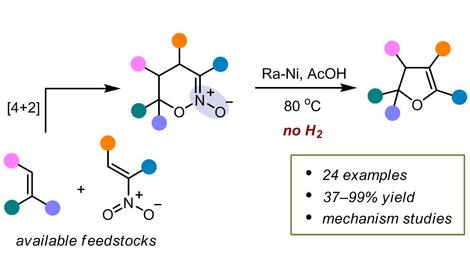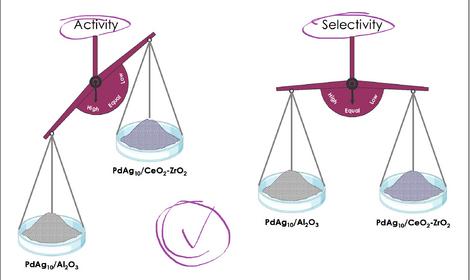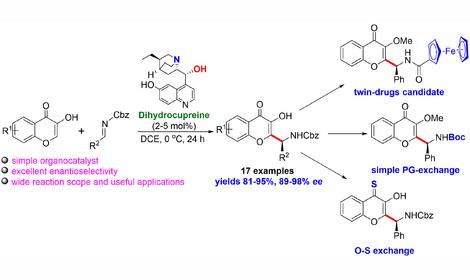Laboratory of Computer Assistance to Chemical Research (N50)

Head: Andrey S. Mendkovich, DSc (Chem.) (e-mail: asmfree.net, tel. +7(499)135-8824)
The laboratory was founded in 1989 by its current head.
Research Areas
Development of methods for the calculation of the electronic structure and technologies of high-performance computions to for finding solutions of chemical problems.
Non-emperical calculations of high-level molecular systems and mechanisms of chemical reactions.
Calculations of the kinetics and modeling of near-electrode reactions.
Development of information technologies and professional communications for chemical research.
Main Results
New computational methods for the electronic structure of superlarge biomolecules and nanoobjects
A method was developed to improve the quantum chemical description of intermolecular dispersion interactions that play a profound role in giant biomolecules. It raises the accuracy of the semiempirical description of potential energy surfaces and takes into account valence surrounding of atoms that interact in getting closer to molecules. On the basis of more than 70,000 high-precision reference nonemperical calculations MP2/aug-cc-pVTZ for 514 different types of dimers there was achieved a significant 2-2.5 times increase in the accuracy of semiempirical calculations of intermolecular interactions: from 4.03 kJ/mol for standard PM3 up to 1.56 kJ/mol for the proposed method.
Currently, a basically new method is being developed to combine a high response of semiempirical methods with the accuracy close to the level of state-of-the-art and most widely used DFT methods. The initial non-iterative version of this method having been generated by now reproduces the DFT fokian by an order of magnitude more accurate than the semiempirics and by 2-3-fold more accurate than the DFTB method (modeling DFT).
Research of radical anions and dianions structure
A comparative study of the anion radical and dianion of 1,3-dinitrobenzene in gas and condensed phases was performed using nonemperic multiconfigurational CASSCF methods. The anion radical in the ground state exists in the form of two structures. A more stable structure is asymmetrical with an unpaired electron localized on one of the NO2 groups. Unlike the anion radical, the dianion has a symmetrical structure both in the triplet and in the lower excited singlet state and its wave function is mainly of a biradical nature.
Study of the anion radicals and dianions reactivity
Protonation and dimerization
An electroreduction mechanism for dinitrobenzenes in proton-donor media and rate constants of its key stages were determined by a complex of theoretical (quantum chemistry and numerical simulation) and electroanalytical methods (in cooperation with Lab. 9). Selectivity of the process was shown to be caused by the boundary electron density localization in anion radicals of the intermediates, viz. nitro nitrosobenzenes, on the nitroso group and orbital control of protonation of the latter. This is also a reason for dimerization of these particles competing with protonation. A theoretical model that describes the impact of various factors on the competition of the above reactions was proposed.
Bond opening reactions
The comprehensive, theoretical and experimental, research has identified the factor that determines electroreduction selectivity for aryl hydroxylamines. It is a previously unknown reaction of elimination of hydroxide anions from anion radicals of nitrophenyl hydroxylamines that initiates competitive processes of the generation of hydrazo and azo derivatives whose ratio of yields dramatically changes while switching from electroanalytical methods to the electrolysis with the controlled potential. Numerical simulation shows that a violation the scalability principle, which is not relevant for other electrochemical processes, in this case is caused by the influence of the mass transfer to the electrode surface on the cyclic reaction rate: diffusion in electroanalytical methods and forced convection in the electrolysis.
The C-C bond opening occurs in the anion radical product of the Henry reaction of 1-phenyl-2-nitroethanol, which gives a free radical of benzyl alcohol and nitromethane anion. A proton transfer between these particles leads to nitromethane and to the anion radical that initiates a cyclic reaction by an electron transfer to the molecule of initial nitrated alcohol. A possibility of this reaction occurrence should be considered when performing the Henry reaction and in reduction of β-nitrated alcohols to corresponding amino alcohols.
Theory of anion radical and dianion reactivity
The theory of reactivity of anion radical and dianions previously developed in Laboratory was complemented by theoretical models of the solvation effect on the chemical behavior of these species. The research results have been summarized in the monographs.




